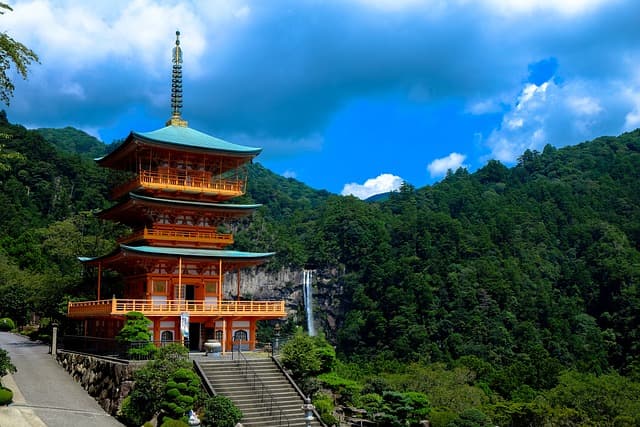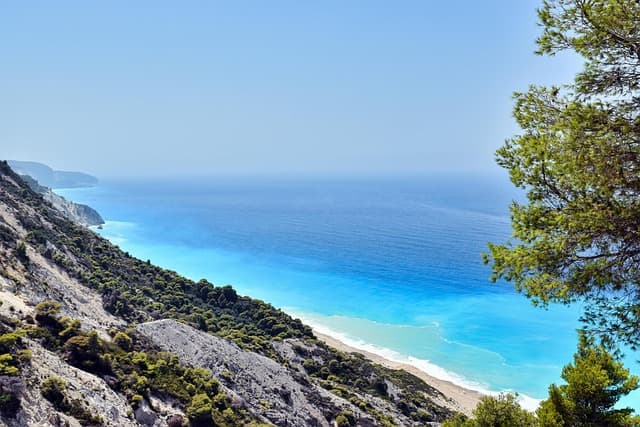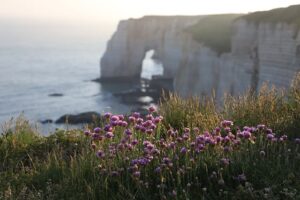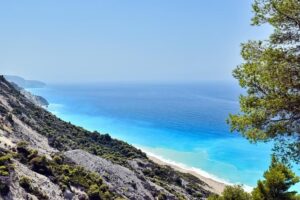Kyoto and Nara are two ancient capitals of Japan as museums of the historical influence of the imperial family and military elite. The architecture of both cities was as advanced as possible in their time. Palaces, shrines and temples consolidated power and multiplied the wealth of patrons who poured large sums of money into them. The rural Hida Valley has a completely different, but no less remarkable, legacy of gassho-zukuri style houses.
How to get there
From Tokyo:3 hours 30 minutes
Take the Tokaido shinkansen to Kyoto Station. There, transfer to the JR Nara line and go to Nara Station.
From Osaka:1 hour
Take the JR Osaka Loop express train at Osaka Station and go to Nara Station
Day 1
Nara Ancient Temples and World Heritage Site
Nara, the historic capital of Japan, has the oldest surviving examples of temple architecture. They were built in the early years after monks from mainland Asia brought Buddhism to the country. Our trip plan will introduce you to the World Heritage Sites within the Nara Green Park, which is spread out near Kintetsu Nara Station and a little further from Nara Station.
Kofuku-ji Legendary five-tiered pagoda
This temple is more than 1000 years old. The undisputed highlight among its treasures is the graceful statue of an asura. This dry-lacquer sculpture has become a cult favorite. Every year, thousands of Japanese from all over the country come to see it. Asura is a six-armed being, one of the eight guardian deities in Buddhism. If you look closely at the statue’s three skillfully carved faces, you can see that each one has a different expression.
Kasuga-taisya 3000 stone lanterns
The age and status of Kasuga-taisya is evident as you approach the shrine. Three thousand stone lanterns stand on either side of a path leading to it through a virgin forest, home to hundreds of sacred (and protected) deer. The history of this majestic shrine is linked to the Fujiwara family, who had considerable influence from the 9th to 12th centuries through a series of cross-marriages with members of the imperial dynasty.
Gango-ji Buddhist artworks and statues oni
The quiet old neighborhood of Naramati, a former shopping district, is the opposite of the bustling, crowded Nara Park. There are cute stores, restaurants, a sake store and Gango Temple, another World Heritage Site. Historians believe that Asuka-dera, Japan’s oldest Buddhist temple, built in the 7th century, was moved here around the same time that Nara became the capital. The building was damaged by fire, but the surviving parts are in fine condition.
Day 2
Kyoto Cultural Capital of Japan
Kyoto is the cultural capital of Japan for a reason: the city is home to many UNESCO World Heritage Sites and Japanese National Cultural Properties. Among them are temples, shrines and shogun villas. The city has been the seat of the Emperor for over 1000 years and is proud of its heritage.
Nijo Castle The residence of Tokugawa Ieyasu, built in 1603
The Battle of Sekigahara was a turning point in the unification of Japan under the Tokugawa shogunate. Nijo Castle was built shortly after the battle as a symbol of the presence of the new ruling regime in Kyoto. The capital was moved to Edo (present-day Tokyo), but Kyoto remained the ancestral home of the imperial family. Nijo is actually a palace rather than a castle: its symbolic rather than military purpose is clear to the naked eye. Inside, there are chic gilded interiors with large, evocative-looking decorations, while outside there are majestic royal gardens. A visit to the castle is definitely worthwhile.
Day 3
Nagoya City of Transportation
Nagoya is one of the fastest growing cities in the country, as well as a major transportation hub. From here it is convenient to get to any part of Japan and most of the surrounding areas. The city makes up for its lack of World Heritage sites with the highest level of shopping, dining and entertainment. It’s a convenient place to rest and shop for souvenirs while traveling between Kyoto and Takayama. We recommend a visit to Sakae, the bustling commercial center of the city, easily recognizable by the Nagoya TV Tower. There are also a number of interesting attractions here, including the Museum of Fine Arts.
Noritake Garden
Not far from Nagoya Station is the headquarters of the world-famous Noritake Ceramics company. Take a tour of the workshops to see porcelain production and even try painting your own porcelain. Nearby restaurant: you can grab a bite to eat.
Day 4
Hida-Takayama Traditional Japanese Architecture
A bus traveling on a circular route around the outskirts of Takayama stops near the Hida Folk Village. This is an open-air museum where several old village houses have been preserved. Their unusual steep thatched roofs can hold a thick layer of snow. This architecture is called “gassho-zukuri” – “a pair of hands folded in prayer”. You can also take the same bus to the underground Festa Forest Museum, which features an exhibition of decorative platforms used at festivals, a collection of wind-up dolls and the world’s largest drum.
What else to see
Kanazawa The cultural capital of the Sea of Japan coastline
From Shirakawa-go to Kanazawa is just under two hours by bus or car. The city is very interesting for lovers of Japanese art, culture and cuisine. It has one of the best landscaped gardens in Japan, Kenroku-en, which the samurai created over two centuries. Stroll through the ancient samurai neighborhoods, and then sample tea and delicious food of Ishikawa cuisine at the large indoor Omityo Market. By the way, local produce and fresh fish from the Sea of Japan are always on sale there!



